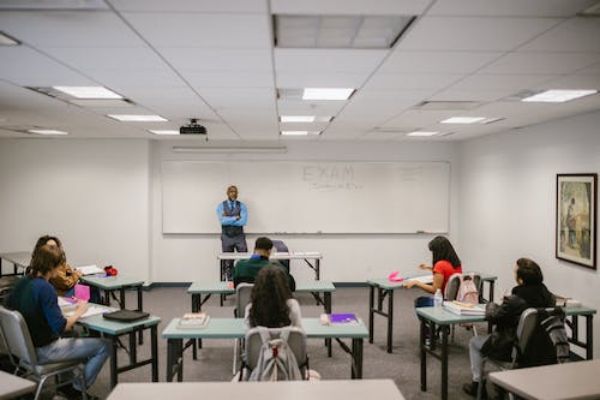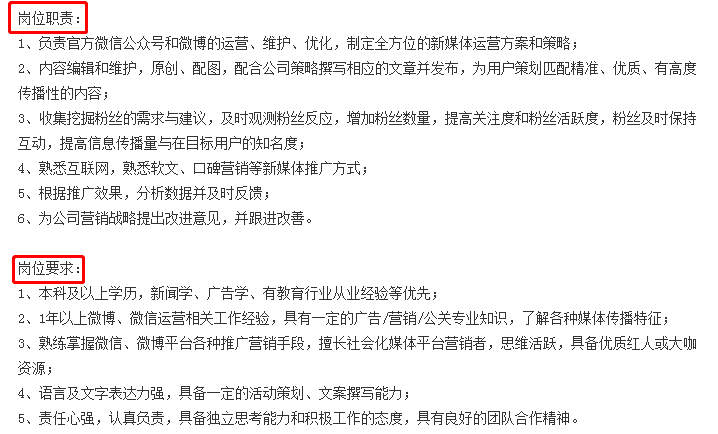你可以先去绘学霸网站找“动漫设计”板块的免费视频教程-点击进入完整入门到精通视频教程列表: www.huixueba.net/web/AppWebClient/AllCourseAndResourcePage?type=1&tagid=304&zdhhr-11y17r-1960448796270131580
想要系统的学习可以考虑报一个网络直播课,推荐CGWANG的网络课。老师讲得细,上完还可以回看,还有同类型录播课可以免费学(赠送终身VIP)。

自制能力相对较弱的话,建议还是去好点的培训机构,实力和规模在国内排名前几的大机构,推荐行业龙头:王氏教育。
王氏教育全国直营校区面授课程试听复制后面链接在浏览器也可打开: www.huixueba.com.cn/school/manhua?type=3&zdhhr-11y17r-1960448796270131580
在“动漫设计”领域的培训机构里,王氏教育是国内的老大,且没有加盟分校,都是总部直营的连锁校区。跟很多其它同类型大机构不一样的是:王氏教育每个校区都是实体面授,老师是手把手教,而且有专门的班主任从早盯到晚,爆肝式的学习模式,提升会很快,特别适合基础差的学生。
大家可以先把绘学霸APP下载到自己手机,方便碎片时间学习——绘学霸APP下载: www.huixueba.com.cn/scripts/download.html
关于动漫文化的论文
摘要 日本动漫创作作为日本文化的直接表征,有着较长的发展历史和广泛的影响,已经形成了一种动漫文化和动漫产业。在日本国内,动漫几乎充满了日本人生活的每一个角落,动漫文化俨然已经成为了一种国民文化。而随着全球化的推进,日本动漫作为一种现代大众文化,正在向全世界蔓延和扩展,产生了较大的影响。相比之下,中国动漫发展缓慢,举步艰难,面对迫切的市场需求,中国动漫需要寻求一条符合中国特色的发展之路。本文结合日本动漫发展史,在对日本动漫作品的多元文化特性进行分析的同时,探讨中国动漫的发展现状和滞后根源,阐述日本动漫作品的文化特征对中国动漫文化建构带来的启示,并透过对动漫文化广度和深度的思考,寻求一条使中国动漫文化蓬勃发展并逐步与国际接轨的道路。
Abstract Animation is called comics and animation, both of which were different and closed, and behind the modern animation content is even more extensive, including not only animation and comics, but also video game network, relevant entertainment and the arts, as well as various derivatives. Japan is the "Kingdom of animation" in the animation world. Japanese animation has a long development as the direct result of Japanese culture, the Japanese animation almost in every corner of Japanese life in Japan, and the animation culture has become a national culture. With the advance of globalization, Japanese animation as a popular culture is spreading and expanding to the whole world.Japanese culture is a kind of cultural diversity, while Japanese animation culture also appears to be a multi-cultural characteristic, and it is this characteristic of the Japanese animation in the world to be popular. Japanese animation culture mainly in the following characteristics: First, open feature. This Japanese animation feature in the performance of their works in the cultural accumulation in the search for a theme at the same time, can take the initiative in the history and culture of other nations extracted material, the vision to further expand from its Asian neighbors and even Europe, from the exotic historical, cultural treasures in the excavations, the animation is not only greatly expand the scope based, but also to the original themes to new ideas; secondly, educational features. Japanese animation works contain a wide range of educational and informative, all kinds of cultural elements are often non-straightforward, non-conceptualized, non-preaching approach embodied in the works, the audience quietly in entertaining in the nurture of education, animation works contain a deeper level, given more educational; Thirdly is a universal feature. Japanese animation in its themes and the theme of Mining, attaches great importance to the integration of universal values, in the performance of the depth and breadth of content, and comprehensive, taking into account different age audience acceptance of a master of animation works often is an unusual cultural background, animation works with the power of not unusual. Of course, we must also be aware of Japanese culture and Japanese animation there is a negative sense - violence and expansion of consciousness. The abstract, humanity would have to be such a sense, but in the realization of specific process, and this awareness is often a national position and the country's political combine, which has the characteristics of the times and historical. The awareness will become very evil if this nation and the country's political position in a state of tyranny and aggression. And vigorous development of animation compared to Japan, the development of Chinese animation relatively stagnant, the reason is as follows: First, because the local animation cultural development deficiencies, lack of imagination, the theme also tends to conceptualize, it is difficult to attract audiences, while imports animation works with its high-quality and diversification in the form of rapidly occupy the domestic market, attracting a large number of Chinese young people, resulting in a crisis of China on the verge of animation; for the second, Chinese animation works blindly imitate abroad in the form of creation, coupled with the packaging and positioning errors, not only to Chinese animation lost local characteristics, and led to the commercialization of dislocation; thirdly, it is due to neglect of various means of the integrated use of the arts, leading animation production means lagging behind in the dubbing, music, screen handling, and other aspects needed improving; in the end, the absence of deep mining in the traditional culture of China and the spirit of exploration refined material, and in the use of these materials when the lack of flexibility and awareness of innovation, resulting in content and lack of animation works.Chinese animation to get the cause of development, and actively learn from foreign advanced concepts and advanced technology is essential, and the Japanese animation works with the many cultural characteristics of the development of Chinese animation bring a lot of inspiration: first, animation and its works of aesthetic taste the integration of universal values. China should learn from Japanese animation works using animation superb works of art visual effects into the universal values theme, the profound truth and the reality of society with creative ways to raise the level of work; second is the concept of animation production in the audience with a combination of a sense of the market; finally, we need to update the audience on the traditional concept of re-establishing the audience's market position, and avoid excessive child to "convert" role, and create all ages that makes it interesting, entertaining works; For the third, animation creation of local characteristics and the combination of advanced technology. From the traditional Chinese culture from the source material, in the creative means to constantly learn from the advanced technology, both organically integrate this rich Chinese characteristics is the development of animation works only way.To go to the world, Chinese animation must based on their own cultural traditions on the basis of updated inherent concepts, adapt to the demands of the times, and further the world to absorb other nations into the cultural elements and advanced technology to promote Chinese animation.
------------------------------------------------------------------------------
其实不是那么简单。
中国动画(不能叫动漫,因为“动漫”的名词是对日本动画和漫画产业的专称)的发展第一高峰是在20世纪40年代,也就是大概1943年万氏兄弟的《铁扇公主》那时,日本动漫还未曾成型。《铁扇公主》传到日本,手冢治虫深深受其影响,加上那时迪斯尼的影响力,这位“漫画之神”才真正觉得日本要有自己的动画。

其实日本早期的动画烂得雷死人,你看过《白蛇传》么,取材自中国,拍的相当简陋。
日本由于二战的原因经济深受打击,那时候是手冢治虫挑起了整个动漫产业的脊梁,他给漫画定义,分类,又摸索着创造动画作品。在日本动漫发展的过程中,中国由于种种原因停下了原本超前的脚步。
60多年之后,在各项领域善于发掘和归纳的日本人把动漫作为日本经济文化的一个重要支柱发展壮大,而中国再也找不回当年万氏兄弟应用的动画手法。
这些有点可悲?
但是中国动画远没有想象的那么简单。她具有非常明显的两面性。
我是一个ACG迷,而且对日漫相当了解。以前曾经对中国动画批判和绝望,不过现在有了点改观。
在中国的政体和大环境下,动漫产业(现在中国也在寻袭日漫的路子)是在夹缝中生存的。
你可以去看看早期的一些作品(我知80后一辈幼年时看的作品),《葫芦兄弟》《阿凡提》《魔方大厦》《大盗贼》《哈哈镜花缘》等都是相当出色的作品。
以下是我论文作品中的一段:

“提到中国本土的逐格动画,记忆中有太多优秀的作品。上海美术**制片厂1979~1989年拍摄的《阿凡提》,1986—1987年的《葫芦兄弟》,1989年的《大盗贼》,1992年的《怪老头儿》等等,都各有其鲜明的风格和诚恳的制作态度。自20世纪40年代万氏兄弟出道以来,中国动画曾一度走在世界前列,以实验短片动画居多,且数量庞杂,手法多样。定格动画多采用剪纸,折纸,木偶和其他综合材料,形象生动而活跃,受众群集中于儿童。”
还有中国独特的水墨风格动画。你可以说不感兴趣,但不能否认她的独一无二。其实中国动画更像欧洲动画,充满实验的味道。
不过产业化的今天,中国动画则力量薄弱,定位的问题很严重。不说审核的事(。。。),中国动漫人缺乏冷静和踏实的态度,没有量的积累实在是没有质的(我知道这么说很俗)。
其实至于比较,的确是先从年代入手,然后诉述发展,分阶段举例讨论;然后再从手法方面说,以此归纳出中国和日本动漫作品的不同特点;另外可以说市场运作,即动漫产业在两国经济文化产业中的地位和作用;最后是发展前景。
时间有限,我先说这些,希望对你有帮助,加油!
























